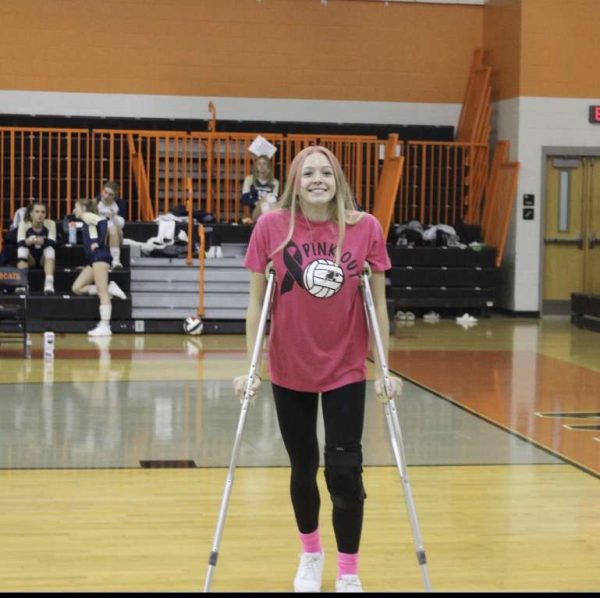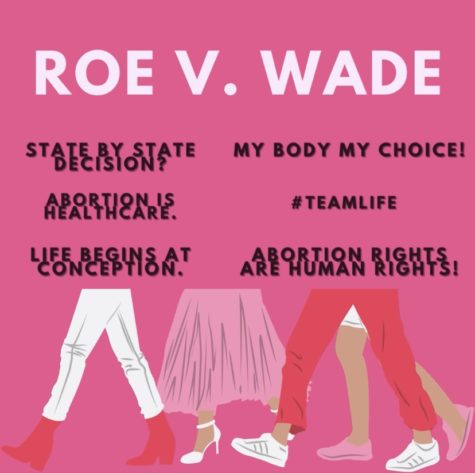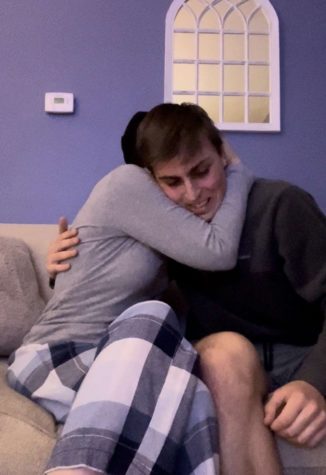The Disconnect When You Double Tap
It has been two hours… you have disciplined yourself to not check your phone and notification after notification goes across the screen. 50 snapchats, 200+ likes on your most recent post, 5 retweets, and a tag on facebook.
The average teenager is spending approximately nine hours a day on their phones. What could they possibly be doing and how is it affecting the brain? The extensive amount of time teenagers are spending on some sort of social media platform is altering how their brain is growing.
Teenagers and young adults have always done and continue to do risky things because sometimes it can be fun and exciting for a young mind. However, the advent of social media has introduced a new social dynamic to those going through the crazy journey of adolescence.
The so called ‘social media challenges’ are quickly embraced by strangers through screens. The challenges target the younger population. Many of the challenges are harmless, but some can be dangerous and can have deadly consequences.
The blue whale challenge is one of the deadliest yet. Video game participants are assigned a series of tasks that start off simple such as listening to music and watching horror movies. As days go by, the tasks become increasingly more difficult to the point where a player stays up all night and is instructed to cut the skin in the shape of a whale onto their arm. The fiftieth task and end to the game is for the player to commit suicide.
Among these tragic trends, the Bird Box challenge is an idea lurking in people as they are blindfolding themselves like the characters in the movie to protect themselves from a dangerous monster. Participants are blindfolding themselves while doing normal activities such as walking and driving, which is negatively putting themselves and others in danger.
Greater Latrobe School District is taking a proactive approach to control the viral Momo challenge hoax that is scaring children over the media. Momo is a doll sculpture with long hair and bulging eyes, which is the work of Link Factory, a Japanese special effects company. The Momo challenge is described as a “suicide game” that has gone viral on messaging services like WhatsApp and even children’s programs like Peppa Pig. Momo encourages children to attempt dangerous stunts through messages and commands. “Parents of students in grades four and five at the elementary schools are being educated about what their children are being exposed to,” said Director of Pupil Services Laurie Golobish. “Eight and nine year olds are starting to get cellphones and it is important that parents are aware of what is online and how to talk to their children about it.”
Yet another end of the extreme, video games are influencing self harm and causing depression, which is a step towards suicide. Teenagers are becoming obsessed with games like Fortnite, Call of Duty, and others. Some video games have caused high amounts of frustration and has led some users to become involved with drugs and make other impulsive decisions in order to stay awake and continue playing. Violence brought to light in video games is having more of an effect on young people than what one may think. The reality is that publishing and media companies such as TribLive and Forbes have projected stories putting the correlation between violent video games and mass school shootings into question.
According to the American Psychological Association, “Humans are born with an innate capacity to imitate. So it doesn’t seem too surprising that the violence viewed as a child can become encoded in such strength as to influence their behavior 15, 30, or maybe even 40 years down the road.” When children or young adults are exposed to violence, the likelihood of possessing similar actions is increased.
Due to the prevalence of social media and its common adoption, kids of all ages are being exposed to many things, the good and the bad. The teenage years are when the brain is very vulnerable to the downsides of social media. That is also a time when teenagers feel drawn to risk-taking and are most susceptible to peer pressure. The adolescence period is a crucial point in one’s life as it is important for social learning, which may be why a teenager is very up-to-date with the trendy social culture consisting of things from social media challenges to new video games or apps.
The prefrontal cortex in the brain, which is responsible for impulse control is not completely developed until the age of 25. Lack of control and the eagerness to see the world at the adolescence age brings both the positives and the negatives.
The constant exposure affects the brain and the actions that follow. Most healthcare professionals are not advocating for “digital abstinence,” but say that it is important [for parents] to be aware of the online culture and the lifelong effects it is having. “There’s a lot of bullying on social media in terms of putting other people down,” said Social Studies Instructor Todd Simpson. “There have also been connections found with teen suicides and problems with bullying whether it be cyberbullying or in-person, physical.”
Researchers at UCLA’s Brain Mapping Center found that when teenagers’ photos get lots of “likes” on social media apps, such as Instagram, their brains respond in a similar way to seeing loved ones or winning money. The sense of appreciation by others on social media through likes was seen on various brain scans to activate the reward centers of the brain. Despite what social media outlets someone may be using, the way teenagers communicate today is very different. Communicating face to face is no longer a norm for the 21st century by young adults, but screen to screen is becoming more of a trend and a second nature to humans.
Teenagers go on Instagram and they immediately see posts by celebrities and scan at the number of likes someone famous gets versus their own. The self esteem for a younger person lowers just by seeing a number and comparing that to themselves. It’s a process that crosses thousands of minds when posts are seen such as Kylie Jenner’s first photo of her daughter (18 million likes), Justin Bieber’s engagement to Hailey Baldwin (13 million likes), or even the most liked photo on Instagram ever of an egg with 27 million likes.
Not only are teens influenced by the number of likes a celebrity gets, they are also impacted by what is shown. Teens see celebrities and even Instagram models who are traveling all over the world. What crosses the mind of a teenager is, “Why can’t that be my life?” Many of these Instagram models flaunt that they are making a living just by being on Instagram and they get to go to all of these luxurious places. It embeds a picture that traveling and luxury all around is what life should be like. By seeing and reading about how someone did not go to college, and how they got to what seems to be the perfect life dulls the motivation to reach goals in an adolescence mind. “You start to think my life really stinks, but the reality is you really only get to see the good aspects of their life online,” said Simpson. “You only see one side of them in what they post, but they have problems too that you don’t get to see.”
Teenagers should dream of what their life will be like in the future whether that be engineer, doctor, teacher, or another career. When they think about all the hard work or the tough road it may be to get there, motivation quickly dissipates due to the desire for instant gratification. Teenagers look up to celebrities and see them as role models and want to be just like them. “Teenagers, especially, end up spinning themselves down into a spiral of depression that they can’t measure up,” said Simpson. Once the reality is brought to life, young people realize it is not so easy to become famous, which may lead to serious mental illnesses like depression.
Unfortunately, family and friends are not recognizing the signs of depression or understanding the true effect of social media. Teenagers are taking their own lives each and every day over trying to live up to a reality of what others want them to be. Social media is not the only cause for the development of mental illnesses, but it is contributing to the increase in suicide rates. The epidemic of suicide is leaving families in heartbreak and has since become the second leading cause of death among teenagers.
Prior to the rise of social media, people learned to read one another by how the person reacts with facial expression. The in-person communication used to be how someone got direct feedback, but now feedback is all through likes, favoriting a comment, or retweets. Behind-the-screen communication is unique and beneficial for a fast-paced world, but also can have its downsides.
This indirect communication leads to misinterpretation and over analyzation. The constant over analyzation of oh my gosh did my boyfriend or girlfriend like my most recent picture?.. Why didn’t they comment heart eye emojis?.. Why didn’t it get as many likes as my other post?.. These are all thoughts running through the minds of teenagers. Sadly, what seems like not a big deal to one person is to another and people are taking their lives over small things from a like on a post to a video game.
Social media has caused many to see the world only through one lense. The world is much bigger and is filled with endless opportunities. “There is a limited tunnel vision of reality through social media and sometimes teenagers get caught up in it,” said Golobish. “Teenagers think that all that comes with being a teenager: high school, the drama, and challenges are their entire lives, but in reality it is just their life right now. I like to remind them that their lives will get better.”
In a world where society depends on technology, what happens when you stop revolving your life around Facebook, Snapchat, Instagram, and Twitter? You get a glimpse of everyone’s perfect social media life every day through their photography, culture, arts, and lifestyle. Sometimes the top priority to someone is to make their life picture perfect on social media and they forget the most important thing in life; and that is to live and make the most of it. Sharing life through social media is such a wonderful thing and it is something a lot of people do, although can cause us to forget that life doesn’t stop there. Happiness doesn’t stop once you post a picture or like someone else’s; you create it. And life goes on.

I am currently a Senior at Greater Latrobe Senior High School and hope to pursue a career in the medical field after high school. I am still in the process...









